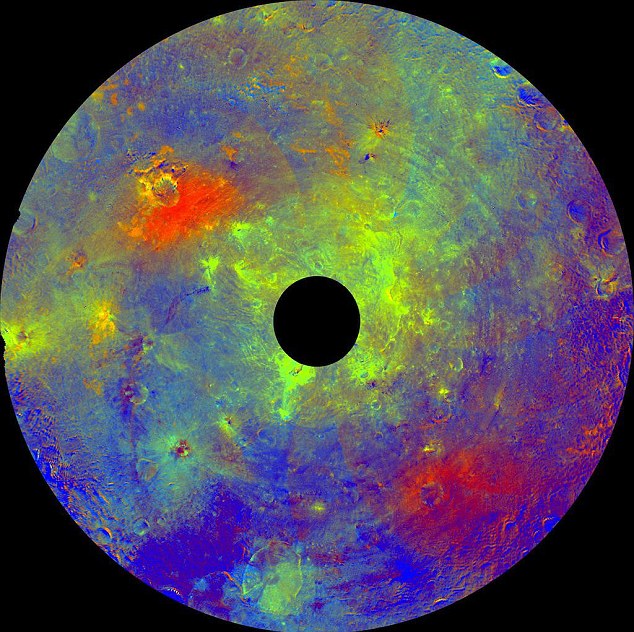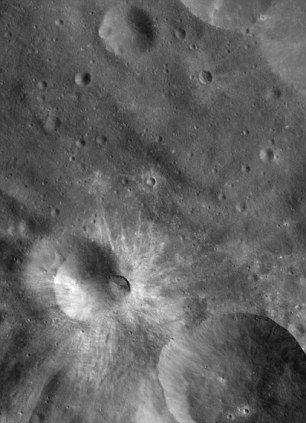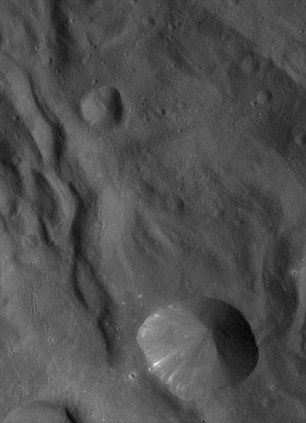New views sent back by the probe, Dawn, this week, reveal an object more like a planet than an asteroid - and scientists say they now consider it a 'transitional body' between the two.
The Dawn spacecraft has been beaming back images since July - the latest show a rugged surface is unique compared to the solar system's much smaller and lightweight asteroids.
Impact craters dot Vesta's surface along with grooves, troughs and a variety of minerals.
'Vesta is unlike any other asteroid,' said mission co-scientist Vishnu Reddy of the Max Planck Institute for Solar System Research in Germany. The new findings were presented at a meeting of the American Geophysical Union in San Francisco.
This image using color data obtained by the framing camera aboard NASA's Dawn spacecraft shows Vesta's southern hemisphere in color, centered on the Rheasilvia formation - the different colours reflect different minerals in the surface.

Most asteroids resemble potatoes, but Vesta is more like an avocado with its iron core, Reddy said.
Asteroids are remnants from the birth of the solar system some 4.5 billion years ago around the same time as the formation of the rocky planets including Earth. Studying asteroids can offer clues about how our planetary system began.

David Williams of Arizona State University considers Vesta a 'transitional body' between rocky planets and the thousands of asteroids floating between Mars and Jupiter.
The mission has yielded a mystery. Before Dawn arrived at Vesta, scientists predicted that the surface would harbor a volcano. There's a hill on Vesta, but researchers said there's no evidence of lava flow or volcanic deposits.
Williams said it's possible the volcanic materials are buried, so the team will keep looking.
Powered by ion propulsion instead of conventional rocket fuel, Dawn will study Vesta for several more months before cruising to an even bigger asteroid, Ceres, where it will arrive in 2015.




Which is that they are the remnants of a planet that blew up - or broke apart - quite a long time ago.
This is commonly mentioned by off-world sources and is also stated by Hubbard, who developed a method for recovering past life memories.
I have never seen this mentioned by "serious" scientists, though it seems like an obvious possibility, seeing that the asteroids occupy an orbit similar to those occupied by the other planets.
I suppose the official reason for visiting the asteroids has to do with mineral resources or scientific exploration, but they always remind me of space opera stories in which enemy ships use asteroids to hide behind. If I were nervous about such things I would have a lot of probes out there nosing around.